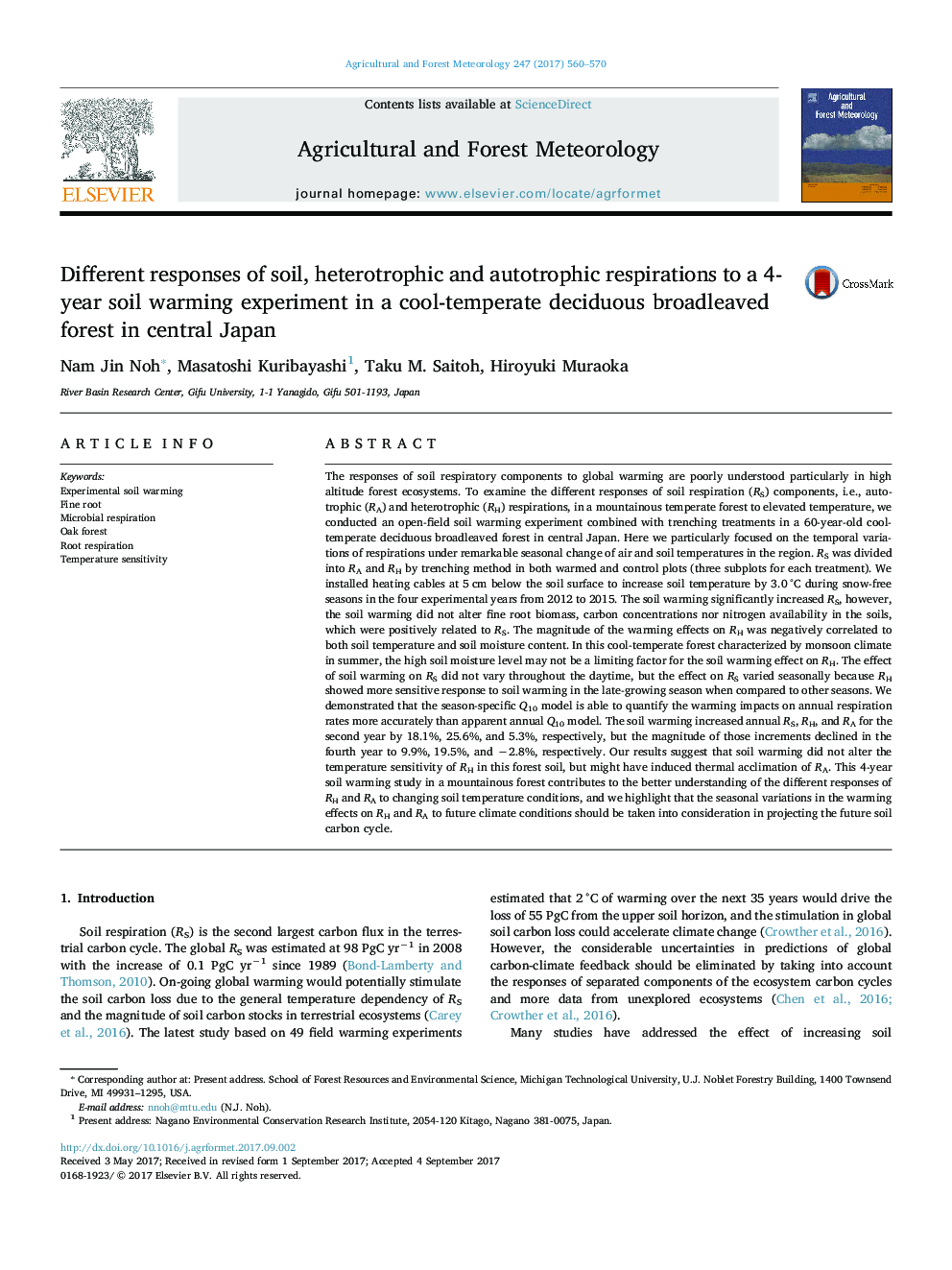| کد مقاله | کد نشریه | سال انتشار | مقاله انگلیسی | نسخه تمام متن |
|---|---|---|---|---|
| 6457856 | 1420854 | 2017 | 11 صفحه PDF | دانلود رایگان |
- Four-year experimental soil warming increased RS and RH but not RA.
- Magnitudes of the warming effect on RS and RH declined in the fourth year.
- RH was more responsive to warming in late-growing seasons than in other seasons.
- Temperature responses of soil respiratory components to warming were season-specific.
The responses of soil respiratory components to global warming are poorly understood particularly in high altitude forest ecosystems. To examine the different responses of soil respiration (RS) components, i.e., autotrophic (RA) and heterotrophic (RH) respirations, in a mountainous temperate forest to elevated temperature, we conducted an open-field soil warming experiment combined with trenching treatments in a 60-year-old cool-temperate deciduous broadleaved forest in central Japan. Here we particularly focused on the temporal variations of respirations under remarkable seasonal change of air and soil temperatures in the region. RS was divided into RA and RH by trenching method in both warmed and control plots (three subplots for each treatment). We installed heating cables at 5 cm below the soil surface to increase soil temperature by 3.0 °C during snow-free seasons in the four experimental years from 2012 to 2015. The soil warming significantly increased RS, however, the soil warming did not alter fine root biomass, carbon concentrations nor nitrogen availability in the soils, which were positively related to RS. The magnitude of the warming effects on RH was negatively correlated to both soil temperature and soil moisture content. In this cool-temperate forest characterized by monsoon climate in summer, the high soil moisture level may not be a limiting factor for the soil warming effect on RH. The effect of soil warming on RS did not vary throughout the daytime, but the effect on RS varied seasonally because RH showed more sensitive response to soil warming in the late-growing season when compared to other seasons. We demonstrated that the season-specific Q10 model is able to quantify the warming impacts on annual respiration rates more accurately than apparent annual Q10 model. The soil warming increased annual RS, RH, and RA for the second year by 18.1%, 25.6%, and 5.3%, respectively, but the magnitude of those increments declined in the fourth year to 9.9%, 19.5%, and â2.8%, respectively. Our results suggest that soil warming did not alter the temperature sensitivity of RH in this forest soil, but might have induced thermal acclimation of RA. This 4-year soil warming study in a mountainous forest contributes to the better understanding of the different responses of RH and RA to changing soil temperature conditions, and we highlight that the seasonal variations in the warming effects on RH and RA to future climate conditions should be taken into consideration in projecting the future soil carbon cycle.
Journal: Agricultural and Forest Meteorology - Volume 247, 15 December 2017, Pages 560-570
